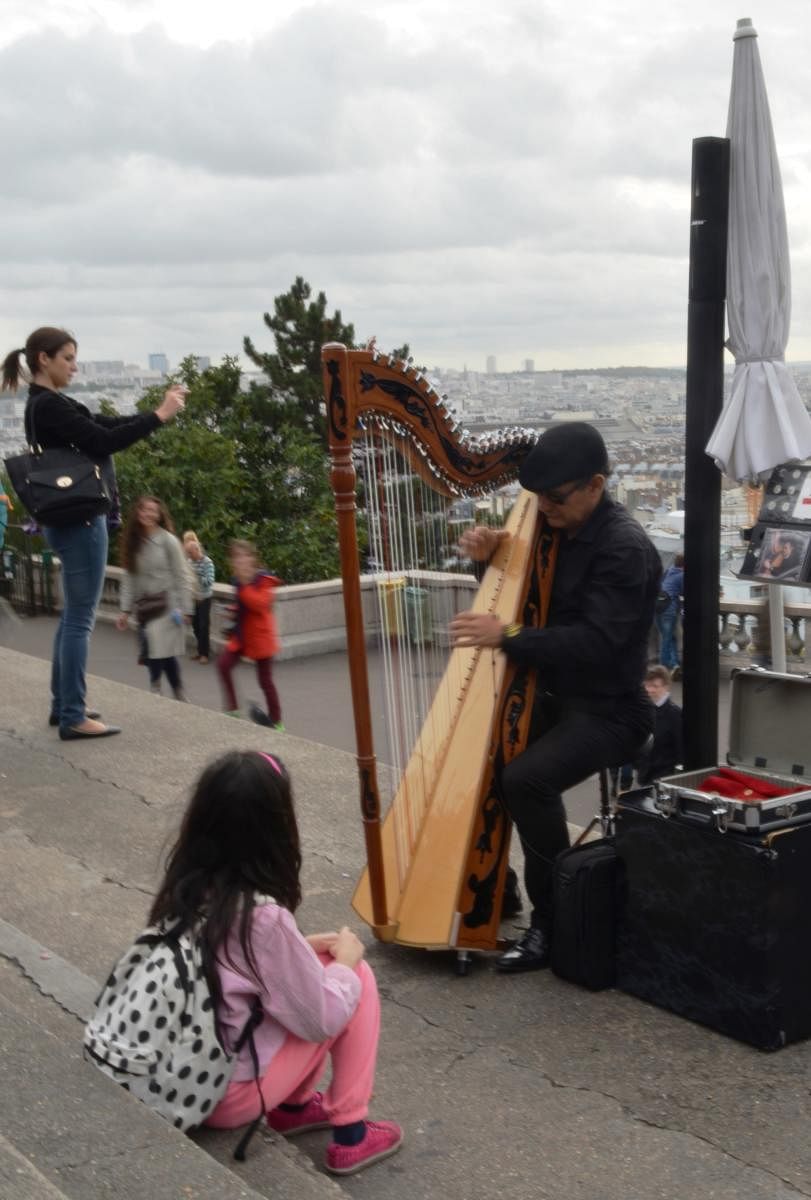
On 12 January 2007, commuters at Washington D C’s L’Enfant Plaza Metro Station saw a violinist playing in a corner. His violin case was kept open on the floor for passers-by to throw a coin or a dollar or two. Few stopped to listen. Some parted with their money.
It was not until 45 minutes into his playing that a lady came up to the violinist, handed out a $20 note and smilingly said she recognised who he was.
That was Joshua Bell, the classical violinist, playing on his Stradivarius violin — valued, even at that time, at a whopping two million dollars. It was an experiment on busking — playing music on the street, secretly organised and filmed by the Washington Post. The statistics were poignant. Of the 1,097 people who passed by, only seven had stopped to listen. Bell had collected a grand total of $32.17.
In our celebration of music, the street musician often remains invisible. A shadowy figure, sparingly appearing in our everyday jingles, whom we all have seen and heard, somewhere, sometimes, but whose presence and refrain has hardly ever got imprinted in the shifting sands of our consciousness. Some cultures, however, have been more humane than others.
European cities and towns have embraced street music as an admirable element of their civic life. Some of that credit must go to their architectural design and town planning, with open public places — the piazzas and the plazas. The space for the pleasures of the human spirit has not been usurped by the greed of real estate development. Take for example the sprawling central square of Konstablerwache in Frankfurt. Come evening and street artistes of spectacular varieties descend upon it. A young woman playing Tchaikovsky’s violin concerto; a Polish group of three — one vamping on his piano accordion, one on flute and the third one playing on his Balalaika — a Russian instrument that has a large triangular wooden body with three strings attached to a stem. And this brings us to the array of musical instruments you can see and hear being played on the streets of Europe. A Marco-Poloesque breadth, from Kyoto to Kinshasa.
I sat and listened to the gentle plucking on the harp on the steps of the famous Sacré-Cœur Basilica in Paris and found a man lonely even at the touristy Charles Bridge in Prague playing on the Didgeridoo — a 1,500-year-old musical instrument of the indigenous people of Australia.
Alleys to swarming towns
India once had an abundant repertoire of music played out — on the alleys of its swarming towns and tranquil villages, on the narrow bunds between expansive rice-fields, at night between the dunes in the desert where the camel caravan would light up a fire to cook and spend the night and in the rhythm of the boatmen across the rivers. Music was a free bird. It danced and swerved and yearned and chirruped to its own whims and fancy. No one judged and there was no yardstick to measure.
All these fantastically varied forms of music got conveniently labelled as folk, a rather cruel reduction of the art. And yet, not all music naturally played out on the street were folk. I remember as a kid in our ancestral home in Kolkata, a man in short dhoti and half-sleeve kurta would come every morning, sharp at 6.00 and sing Vaishnavi Kirtans with the accompaniment of his manjira. The ISKCON-driven Hare Krishna movement has kept this Vaishnavi Bhakti tradition of street music alive and I was fascinated to catch them sing and dance on the streets of London. The Baul tradition of Bengal — of the singing minstrels — is still not extinct and one captivated me at a village fair near Tagore’s Shantiniketan.
However, street musicians in India — on the pavement, in the train, at bus stations and at market places — are a vanishing tribe. Their space has shrunk and officialdom often chokes whatever spirit they have left.
Attempts have been made to preserve them, like at the Bharatiya Lok Kala Mandal in Udaipur and other such places. Festivals like the Hornbill Festival in Nagaland, Poush Mela in Tagore’s Shantiniketan and the Pushkar Fair in Rajasthan are creating platforms for musicians. But, they are few and far between, often driven by official patronage and are a contradiction of sorts as they are usually choreographed outputs. Street music has always been about being in the open and fluid — nourished not by benefaction from the top, but by the loving care of ordinary folk while going about their everyday chores.
Street music is not just about them, the musicians who carve out a day’s earning on the street, but is about us, as hues of the finer tones in the canvas of our own everydayness. And we mustn’t let that fade away.
Sounds Of Music is your genre-bending occasional column on all that is groovy in global music.